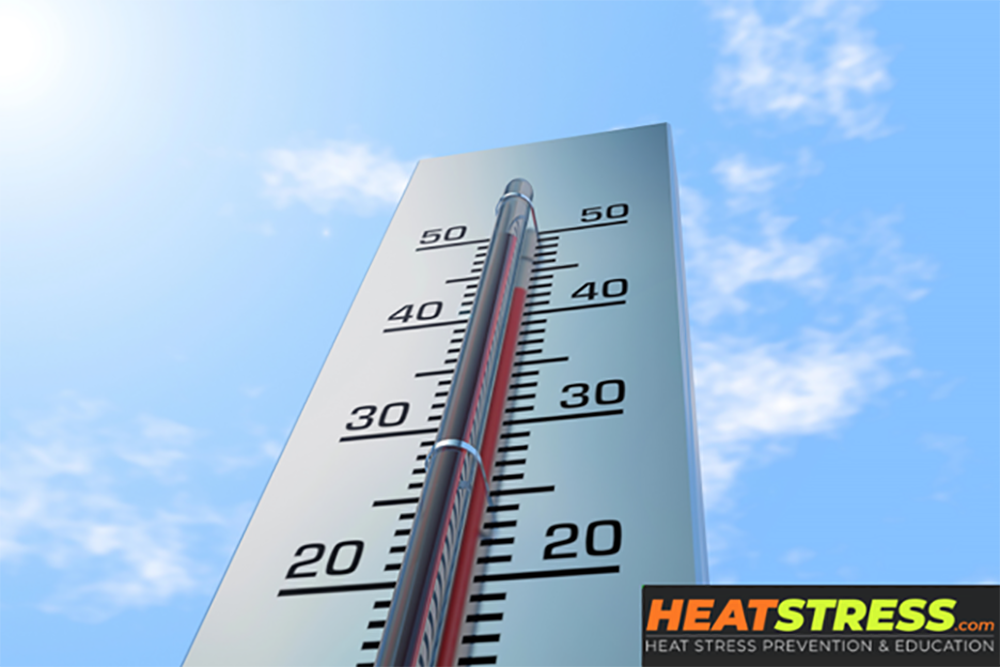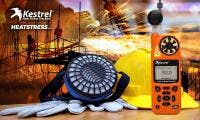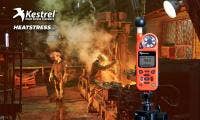Why WBGT is the Gold Standard for Heat Safety Monitoring

Understanding Heat Stress and the Importance of Accurate Monitoring
Heat stress is a critical concern for athletes, workers, and military personnel exposed to extreme temperatures. As global temperatures rise and heat waves become more frequent, understanding the risks associated with heat stress is more important than ever. The Wet Bulb Globe Temperature (WBGT) measurement has emerged as the most effective and reliable measurement for assessing environmental heat stress, surpassing traditional metrics like temperature and heat index.
What is WBGT and How Does it Work?
WBGT is a measure of the heat stress in direct sunlight, which takes into account: temperature, humidity, wind speed, sun angle, and cloud cover - also known as solar radiation. Unlike a standard thermometer that only measures air temperature, WBGT provides a more comprehensive assessment of heat stress by considering multiple environmental factors that impact human heat tolerance.
By combining these factors, WBGT provides an accurate assessment of the true heat risk, allowing individuals and organizations to make informed decisions regarding heat safety.
Why WBGT is Superior to Standard Heat Index Measurements
Many people are familiar with the heat index, which combines temperature and humidity to estimate how hot it feels. However, heat index has limitations, particularly in high-exertion environments where radiant heat and wind speed play significant roles.
Key Advantages of WBGT Over Heat Index:
- More Comprehensive Measurement - WBGT includes additional environmental factors beyond temperature and humidity, offering a fuller picture of heat stress.
- Better for High-Intensity Activities - The heat index does not consider solar radiation or exertion levels, which can lead to underestimating heat stress for athletes, outdoor workers, and military personnel.
- Widely Accepted in Occupational and Athletic Standards - Organizations such as OSHA, NIOSH, and the NCAA use WBGT as their preferred metric for heat stress monitoring.
- Provides Actionable Guidance - WBGT is used to establish safety guidelines, such as recommended work-rest cycles and hydration protocols, reducing the risk of heat-related illnesses.
Who Needs WBGT Monitoring?
Heat stress is a universal challenge, but certain groups are at a higher risk and benefit greatly from WBGT monitoring:
- Athletes & Coaches - Helps ensure safe training conditions and prevents heat exhaustion or heat stroke during intense practices and competitions.
- Occupational Workers - Construction workers, landscapers, firefighters, and factory employees operating in high-heat environments.
- Military Personnel - Soldiers training or deployed in extreme climates rely on WBGT to maintain operational effectiveness.
- Event Organizers - Outdoor sporting events and races use WBGT to modify start times or provide extra cooling stations when necessary.
How to Monitor WBGT Effectively

Investing in a reliable WBGT monitoring device is the best way to ensure heat safety. Devices like the Kestrel 5400 Heat Stress Tracker provide real-time, accurate WBGT readings, helping users take immediate action when conditions become unsafe.
Best Practices for WBGT Monitoring:
- Place the device in direct sunlight, as shade readings may underestimate actual heat exposure.
- Monitor WBGT levels throughout the day, as heat stress conditions can change rapidly.
- Establish heat safety protocols based on WBGT thresholds (e.g., modify work-rest schedules, increase hydration frequency, or adjust game times for athletes).
Take Heat Safety Seriously with WBGT Monitoring
Heat stress is a preventable risk, but only if the right monitoring tools are used. Relying on WBGT instead of traditional temperature or heat index readings ensures a more accurate assessment of heat danger, helping to keep athletes, workers, and military personnel safe.
By integrating WBGT monitoring devices into heat safety protocols, organizations can proactively reduce the risk of heat-related illnesses and improve overall well-being in extreme environments.





